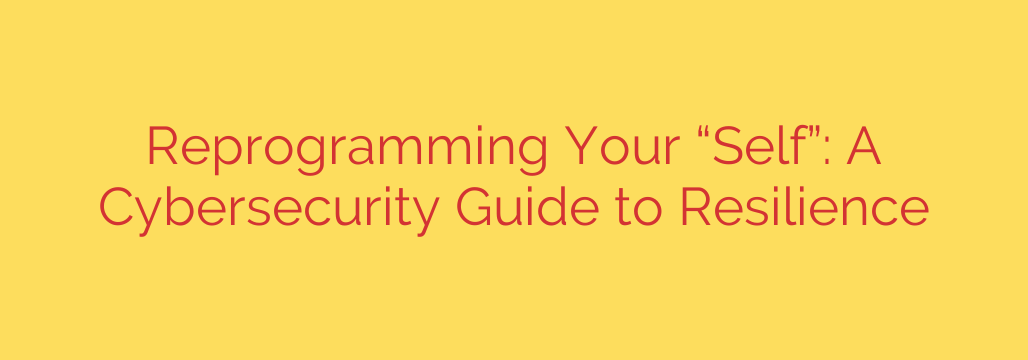
In the world of cybersecurity, we often focus on sophisticated technologies – firewalls, encryption, intrusion detection systems. While these are absolutely essential, they represent only part of the solution. A critical, often underestimated, element in our defense against cyber threats is the human factor – our own minds, habits, and behaviors. Building true resilience online requires not just securing our devices and networks, but also effectively “reprogramming” ourselves.
Think of your mind as a vital component in your personal security system. Just like software needs updates to patch vulnerabilities, our understanding and reactions to cyber threats need constant updating and refinement. Attackers frequently target individuals not through complex technical exploits, but through manipulating human psychology – a tactic known as social engineering. Phishing emails, deceptive websites, and fraudulent phone calls are designed to bypass technical defenses by tricking people into revealing sensitive information or taking harmful actions.
Becoming resilient means training your internal security system. It starts with awareness. Understanding the common tactics used by cybercriminals is the first step. Recognize the tell-tale signs of phishing attempts – urgent language, requests for personal information, suspicious links, or unusual sender addresses. Learn to be skeptical of unsolicited communications, even if they appear to come from trusted sources.
Beyond awareness, cultivating critical thinking is key. When faced with a suspicious request or message, pause and evaluate. Does this seem legitimate? Why am I being asked for this information? Is there another way to verify this request, perhaps by contacting the purported sender through a known, official channel rather than replying directly? Developing this habit of questioning helps you identify and avoid scams.
Furthermore, building strong security habits significantly enhances personal resilience. This includes consistently using strong, unique passwords for different accounts, and crucially, enabling multi-factor authentication (MFA) whenever possible. MFA adds an extra layer of security, making it much harder for attackers to access your accounts even if they somehow obtain your password. Regularly updating your software and operating systems is also vital, as updates often contain patches for known security vulnerabilities.
This process of strengthening your “self” against cyber threats is not a one-time task, but an ongoing commitment. The threat landscape is constantly evolving, with new scams and techniques emerging regularly. Staying informed through reputable sources and continuously practicing safe online behaviors is essential for maintaining strong personal cybersecurity resilience.
Ultimately, while technology provides the infrastructure for our digital lives and the tools for defense, our personal resilience is the frontline. By being vigilant, applying critical thought, and building robust security habits, we become the strongest defense mechanism available, significantly reducing the likelihood of falling victim to cybercrime and helping to create a safer digital environment for everyone.
Source: https://www.offsec.com/blog/recompiling-your-self-a-guide-to-resilience/








